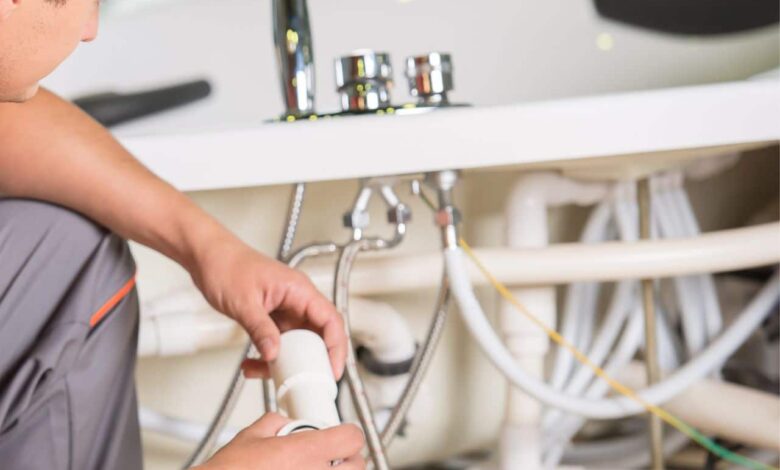Blog
The Basics of How Your Sewer Drain System Operates

A functioning sewer drain system is essential for maintaining a clean and efficient household. Whether it’s removing waste from your kitchen sink or flushing your toilet, understanding how your sewer line works can help you maintain its operation and address potential issues before they become significant problems. Here’s an in-depth look into the mechanics of a sewer drain system.
How Sewer Drain Systems Work
The Role of the Sewer Drain
The sewer drain system is responsible for transporting wastewater from your home to either a municipal sewer system or a private septic tank. It consists of various interconnected components, including pipes, vents, and traps, all designed to ensure smooth and sanitary waste removal.
Key Components of a Sewer Drain System
Drain Plumbing: These are the pipes that connect your household fixtures to the larger sewer drain pipe. They carry wastewater from sinks, showers, and toilets to the main drain line.
Main Sewer Line: This is the primary channel that transports all the collected wastewater from your home to the external sewage system.
Sewer Vents: Vents prevent pressure buildup within the pipes, allowing wastewater to flow freely.
Traps: Located under sinks, traps hold a small amount of water to block sewer gases from entering your home.
How Waste Moves Through the System
1. Collection
Wastewater from your sinks, toilets, and appliances flows into smaller drain lines, which connect to the sewer drain. These lines are angled to rely on gravity for efficient flow.
2. Transportation
Once collected in the smaller pipes, wastewater moves to the sewer drain pipe, which connects to the main sewer line or septic system.
3. Ventilation
Proper airflow, managed by the venting system, ensures that wastewater doesn’t get trapped. Without vents, the flow could be slowed or even reversed, leading to blockages.
4. Treatment or Disposal
The wastewater is transported to a municipal treatment facility or your private septic tank for further processing and safe disposal.
Common Issues with Sewer Drain Systems
1. Blockages in the Drain Line
Blockages are a frequent problem in sewer drains, often caused by grease, hair, or foreign objects. Over time, these materials can accumulate, restricting flow and causing backups.
2. Tree Root Intrusion
Tree roots can infiltrate older sewer piping, especially if there are small cracks or weak joints. Roots grow toward the moisture inside the pipes, causing significant damage.
3. Sewer Line Corrosion
Older homes with metal sewer lines are susceptible to rust and corrosion, which weakens the pipes and leads to leaks or collapses.
4. Misaligned or Damaged Pipes
Shifting soil or improper installation can cause sewer pipes to become misaligned, leading to leaks or inefficient waste flow.
Maintaining Your Sewer Drain System
Regular Inspections
A professional inspection can identify issues like blockages, leaks, or damage before they worsen. Specialists often use cameras to check inside a sewer, ensuring a thorough evaluation.
Preventative Measures
Avoid flushing non-degradable items like wipes or feminine hygiene products.
Dispose of grease and oil properly instead of pouring them down the drain.
Use drain screens to catch hair and debris.
Professional Cleaning
Scheduling routine cleaning for your sewer drains helps remove buildup and prevent clogs. Hydro jetting, for example, can clear out grease, debris, and roots.
Signs of Sewer Problems
Slow Draining Fixtures
If multiple drains in your home are slow, it could indicate a blockage in the main sewer drain.
Unpleasant Odors
A foul smell from your drains often signals a clog or leak in your sewer plumbing.
Backed-Up Water
When wastewater flows back into sinks, showers, or toilets, it’s a sign of a serious blockage in the sewer line.
Gurgling Noises
Air bubbles trapped in the system can create gurgling sounds, indicating a potential venting issue.
Why Choose Professional Help?
Fixing sewer piping issues requires specialized tools and expertise. Attempting a DIY solution may worsen the problem, especially if the issue lies in the sewage line or beneath the foundation. Trusting experts like Super Brothers ensures safe and effective resolution of any sewer-related problems.
Conclusion
Understanding the basics of how your sewer drain system operates is essential for maintaining a healthy and functional home. Regular maintenance and quick action on warning signs can prevent costly repairs and ensure a seamless waste disposal process. For all your drain plumbing and sewer line needs, trust Super Brothers to provide reliable and professional service.





